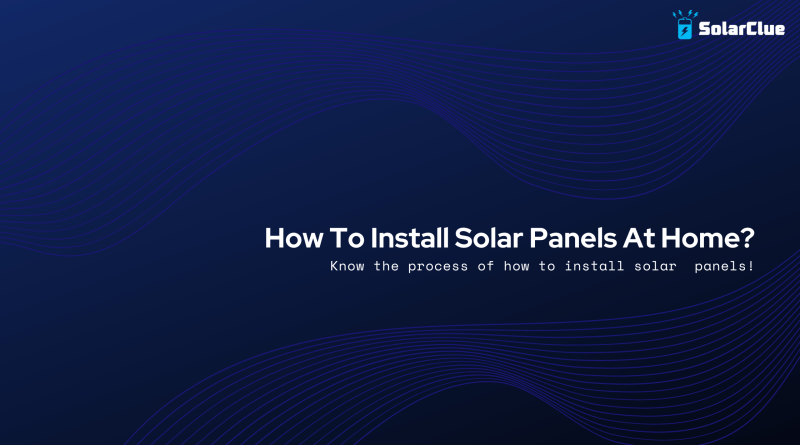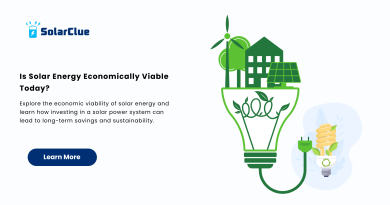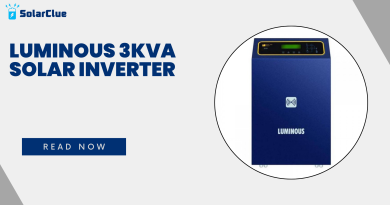How To Install Solar Panels At Home?
Installing solar panels on your home is a significant investment that can reduce electricity costs and contribute to a sustainable future. This blog covers essential steps from initial planning to system activation, ensuring a successful installation process.
Table of Contents
- 1 Initial Planning of Solar Installation
- 2 System Sizing
- 3 Permit Acquisition
- 4 Roof Assessment
- 5 Panel Installation
- 6 Electrical Wiring
- 7 Inverter Setup
- 8 Grid Connection
- 9 System Activation
- 10 Maintenance and Monitoring of Solar Panels
- 11 Troubleshooting Common Issues
- 12 FAQs
- 12.1 1. Is it better to install solar panels yourself or hire a professional?
- 12.2 2. How do I determine the size of the solar panel system I need?
- 12.3 3. What permits are required for installing solar panels?
- 12.4 4. How do I maintain my solar panels?
- 12.5 5. What should I do if my solar panels are not producing as much energy as expected?
Initial Planning of Solar Installation
DIY vs Professional Installation
DIY Installation:
- Pros: Cost savings, personal satisfaction, flexibility in scheduling.
- Cons: Requires technical knowledge, higher risk of errors, potential safety hazards.
Professional Installation:
- Pros: Expertise, faster installation, compliance with regulations, warranties.
- Cons: Higher upfront cost.
Understanding Solar Panel System Components
- Solar Panels: Capture sunlight and convert it into electricity.
- Inverter: Converts DC electricity from the panels into AC electricity for home use.
- Mounting System: Secures the panels to the roof.
- Battery (Optional): Stores excess energy for later use.
- Monitoring System: Tracks the system’s performance.
System Sizing
1. Calculate Energy Consumption: Review your electricity bills to find your average monthly kWh usage.
2. Determine System Size: Divide your monthly consumption by the average peak sun hours in your area to estimate the system size in kW.
3. Panel Count: Divide the system size by the wattage of the panels to find the number of panels needed.
Example:
- Monthly consumption: 500 kWh
- Peak sun hours: 5 hours/day
- Required system size: 500 kWh / 30 days / 5 hours = 3.33 kW
- Panel wattage: 300W
- Number of panels: 3.33 kW / 0.3 kW = 11.1 (round up to 12 panels)
Permit Acquisition
- Local Regulations: Check with your local government for specific permit requirements.
- Documentation: Prepare site plans, system designs, and electrical diagrams.
- Submission: Submit your permit application and wait for approval.
Roof Assessment
- Orientation and Tilt: Ensure your roof is south-facing with an optimal tilt angle (15-40 degrees).
- Structural Integrity: Verify that your roof can support the weight of the solar panels.
- Shading: Check for and address any shading from trees, buildings, or other obstructions.
Panel Installation
Necessary Tools and Equipment
- Ladder
- Safety harness
- Drill
- Wrench set
- Screwdriver set
- Wire cutters/strippers
- Multimeter
- Mounting brackets and rails
System Sizing Example
| Parameter | Value |
|---|---|
| Monthly consumption | 500 kWh |
| Peak sun hours | 5 hours/day |
| Required system size | 3.33 kW |
| Panel wattage | 300W |
| Number of panels needed | 12 panels |
| Initial investment | ₹2,50,000 |
| Monthly savings | ₹5,000 |
| Payback period | 50 months |
By following this guide, you can ensure a successful solar panel installation process, from initial planning to system activation, maximizing energy output and enjoying the benefits of renewable energy.
Safety Precautions
- Use appropriate personal protective equipment (PPE).
- Ensure the electrical system is powered off during installation.
- Follow manufacturer instructions and local electrical codes.
Installation Steps
1. Mounting System: Secure the mounting brackets and rails to the roof.
2. Panel Placement: Attach the solar panels to the mounting system.
3. Wiring: Connect the panels using appropriate wiring techniques.
Electrical Wiring
- Conduit Installation: Run electrical conduit from the panels to the inverter location.
- Wiring Connections: Connect the solar panel array to the inverter, following electrical codes.
- Grounding: Properly ground the system to prevent electrical hazards.
Inverter Setup
- Placement: Install the inverter close to the main electrical panel.
- Connections: Connect the inverter to the solar panel array and the main electrical panel.
- Configuration: Configure the inverter settings according to the manufacturer’s instructions.
Grid Connection
- Utility Company Approval: Obtain approval from your utility company for grid connection.
- Net Metering: Sign up for a net metering program to sell excess electricity back to the grid.
- Inspection: Schedule an inspection to ensure the system complies with local regulations.
System Activation
- Final Check: Verify all connections and components are secure.
- Power On: Turn on the inverter and monitor system performance.
- Monitoring: Use your monitoring system to track energy production and consumption.
Maintenance and Monitoring of Solar Panels
- Regular Cleaning: Clean the panels periodically to remove dust and debris.
- Inspections: Conduct regular inspections to check for damage or wear.
- Performance Monitoring: Use your monitoring system to detect and address issues early.
Troubleshooting Common Issues
- Low Energy Output: Check for shading, dirt on panels, or faulty connections.
- Inverter Problems: Ensure the inverter is properly ventilated and contact the manufacturer if issues persist.
- Grid Connection Issues: Contact your utility company for assistance.
Here at SolarClue®, we offer a smart, practical, and “beautiful” solution. You will be answered for all the questions related to Solar.
We provide all kinds of brands that are the Best Solar panels in India.
If you are the one who is planning for the solar power system. Don’t hesitate to contact our team!
Looking forward to empowering you with solar energy, just like hundreds of our other clients!
FAQs
1. Is it better to install solar panels yourself or hire a professional?
Hiring a professional is recommended for most homeowners due to the complexity and safety risks involved in solar panel installation.
2. How do I determine the size of the solar panel system I need?
Calculate your average monthly energy consumption, divide by the average peak sun hours, and then determine the number of panels based on their wattage.
3. What permits are required for installing solar panels?
Permit requirements vary by location, but typically include building and electrical permits. Check with your local government for specific requirements.
4. How do I maintain my solar panels?
Regularly clean the panels, inspect for damage, and monitor performance using a solar monitoring system.
5. What should I do if my solar panels are not producing as much energy as expected?
Check for shading, dirt on the panels, or faulty connections. If the issue persists, contact your installer or a professional technician.




